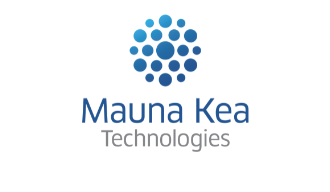On Target Laboratories and Mauna Kea Technologies Further Explore Targeted Detection and Real-Time Diagnosis of Lung Cancer with a Molecular Imaging Agent
Results of the 20-patient study published in the European Journal of Nuclear Medicine and Molecular Imaging demonstrated the potential for high diagnostic accuracy when combining a cancer-targeted molecular imaging agent with a real-time needle-based confocal laser endomicroscopy system to assess malignancy in small, difficult-to-diagnose lung nodules
On Target Laboratories, Inc. and Mauna Kea Technologies today announced publication of a study entitled “Targeted Detection of Cancer Cells During Biopsy Allows Real-Time Diagnosis of Pulmonary Nodules”1 in the peer-reviewed European Journal of Nuclear Medicine and Molecular Imaging (EJNMMI).
The first-of-its-kind study, conducted by the team at University of Pennsylvania School of Medicine in Philadelphia, PA, and funded in part by Lung Cancer Initiative at Johnson & Johnson*, aimed to assess the diagnostic accuracy of detecting lung cancer at the cellular level while using On Target’s intraoperative molecular imaging agent, CYTALUX™ (pafolacianine) injection, paired with Mauna Kea’s U.S. FDA 510(k) cleared Cellvizio® platform for intralesional visualization of cells that have taken up CYTALUX™ in small solitary pulmonary nodules (SPNs) during bronchoscopic biopsy.
In this ex vivo study on surgically excised tumors, the investigators provided evidence that a Molecular Image-guided Procedure (MIP) conducted with near-infrared needle-based confocal laser endomicroscopy (NIR-nCLE) may enable sensitive detection of malignancy at the level of individual cancer cells. This is especially important for SPNs due to their lack of radiological signal for malignancy, and ground-glass opacity (GGO) nodules, which have a soft tissue architecture that is difficult to distinguish from normal lung tissue.
The study demonstrated this new approach can allow real-time detection of malignant cells at the tip of the biopsy needle and creates images that permit accurate discrimination between tumor and normal tissue by non-expert observers. On a per-lesion basis, the blinded raters scored NIR-nCLE on the presence of malignancy with an overall sensitivity and specificity of 98% and 97%, respectively. PPV and NPV were both 98%, and overall diagnostic accuracy was 97%, representing a potentially significant improvement compared to conventional diagnostic methods, according to the authors.
“The diagnostic yield of lung nodule biopsies is inherently low, which can present a challenge for clinicians to sample tissue from the nodule for differentiation between benign and cancerous nodules,” said Chris Barys, Chief Executive Officer of On Target Laboratories. “Studies like this have the potential to identify ways to improve yields and improve diagnosis of lung cancer at earlier stages.”
“Our collaboration with On Target Laboratories continues to deliver real and meaningful innovations for lung cancer patients and the physicians who care for them. In continuing to explore the use of Cellvizio with CYTALUX through this study, the authors have demonstrated the potential of this new class of procedures for targeting and diagnosing lung cancer with very high accuracy and reliability,” stated Nicolas Bouvier, interim CEO of Mauna Kea Technologies.
*The legal entity of the Lung Cancer Initiative at Johnson & Johnson is Johnson & Johnson Enterprise Innovation Inc


